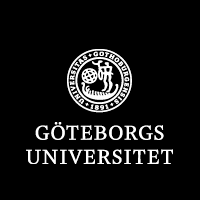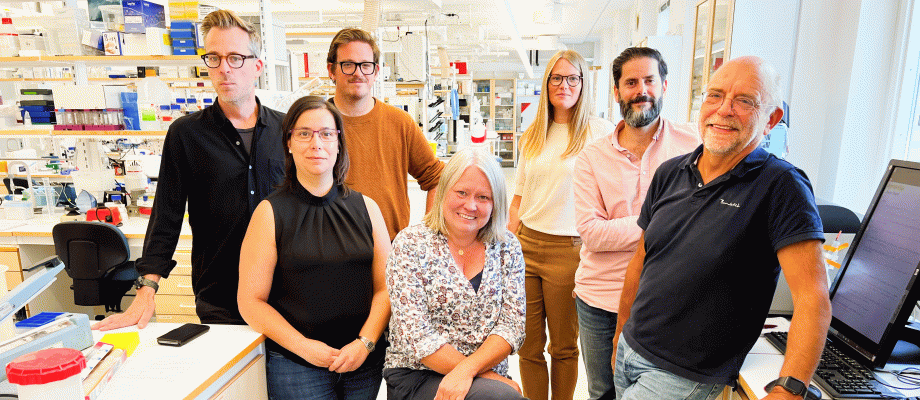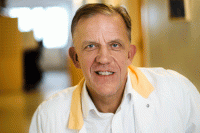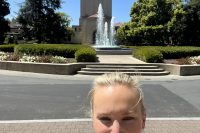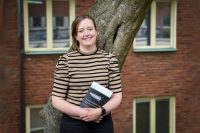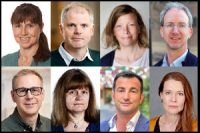RESEARCH. High up in Lundberg Laboratory, the University of Gothenburg has brought together research on the mucus that protects the intestines and lungs against infections. Eight research teams are working here at the absolute cutting edge of mucin and mucus biology. Join us for a visit to their new laboratories.
Two years have passed since the laboratories moved from their former premises in the basement of ‘Medicinarelängan’ to the top floor of the Lundberg Laboratory building. About 30 researchers now work in this creative environment, sharing instruments and helping each other tackle difficult research questions.
“Usually, you have to turn to another university, maybe even to another country, to find really good collaborations. Here we have them gathered on the same hallway. It is very unusual for teams to complement each other so well in the same research environment, and this is a great strength for us,” says Thaher Pelaseyed, one of the team leaders.
Pelaseyed’s own internationally unique research focuses on a special group of mucins that adhere to and coat the surface of intestinal cells. These mucins form a protective barrier for the intestinal bacteria under the mucus layer, and specifics about their function are poorly understood.
Love mucus
The research environment has developed around Professor Gunnar C. Hansson, one of the prominent pioneers in the field. For more than 30 years, he has studied the biological mechanisms that create and maintain a healthy mucus barrier and the factors that contribute to the diseases afflicting us when the barrier does not work as it should. The research is backed by the largest Swedish, European, and American research funding organizations, and their findings have been published in Science, Nature, and other major journals a number of times.
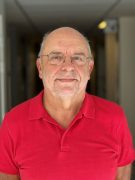
“All researchers in the field keep an eye on what we are working on, and I am often invited to be a keynote speaker at international conferences. Afterwards, audience members sometimes come forward and thank us for inspiring them to enter the research field, often commenting ‘I love mucus’”, says Hansson with a laugh.
In recent years, he has moved his focus in the field from the intestinal to the respiratory tract. He recently received a proof-of-concept grant from the European Research Council to continue to develop findings on a particular protein in lung mucus–research that has a good chance of leading to a completely new pharmaceutical to treat chronic obstructive pulmonary disease (COPD).
Wide-ranging research
Research on mucin and mucus biology currently is flourishing at Sahlgrenska Academy, where the research spans biochemistry, structural biology, mass spectrometry, cell biology, pharmacology, and physiology. The success is reflected in the fact that the research leaders received large start-up grants from the Swedish Research Council, the Swedish Society for Medical Research (SSMF), and the Agreement for Cooperation on Medical Education and Research (ALF). They all conduct independent lines of research, studying various aspects of the protective mucous layer in the intestine. The research ranges from the formation of intestinal cells from stem cells, to different types of cells, especially the goblet cells that contribute to the formation of the protective mucus layer, to how cells in the intestinal wall are warned when the mucous layer fails. It also investigates how bacteria in the intestine interact with cells in the intestinal wall and how the symbiosis between the mucous-forming cells and the microbiota in the intestine is maintained.
The entire floor plan creates an airy impression. Offices line up along a slightly winding hallway. Several smaller rooms have microscopes and other instruments shared by all researchers, who also have a large open common wet lab.
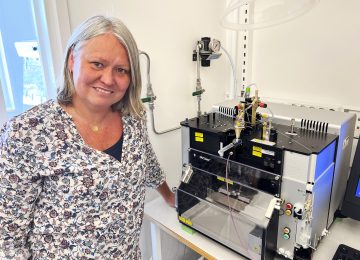
Successful move
The team leaders agree it was a stroke of luck to move into the newly rebuilt laboratory environment atop Lundberg Laboratory.
“It is nice to work in these bright and inspiring premises, where the open spaces make it easier to interact. We also collaborate with research teams on other floors of Lundberg Laboratory, and we want to facilitate natural meetings there through regular shared coffee breaks for the whole building,” Malin Johansson muses.
In an article in Science, she recently showed that cells forming the mucus of the protective barrier, known as goblet cells, are not just a single cell type, but consist of several subtypes with different functions. She is now investigating the role of the various cell types in the inflammatory process underlying ulcerative colitis, both in samples taken from patients and from mice.
Discussions trigger new ideas
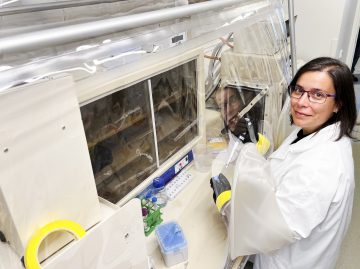
The mucus in the protective barrier of the intestine is made up of mucin glycoproteins, which have large bottle brush-like sugar structures. Ana Luis, who recently joined the team after a period as a postdoctoral researcher in the U.S., focuses on how bacteria in the intestine interact and degrade these sugar structures.
“My research colleagues have a different perspective on the protective mucous barrier than I had, and their biological insights have helped me expand my own research.”
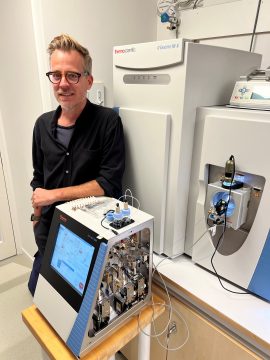
Sjoerd van der Post agrees:
“The research environment is very inspiring, which I think is largely due to none of the teams working on the same thing but specializing in some aspect of mucus and mucous membranes. We often get new ideas when we discuss the research with each other.”
Stem cells and symbiosis in the intestine
As an expert in mass spectrometry and proteomics, van der Post collaborates with all other research teams within the Mucin Biology Groups. There is a great need to identify and quantify the proteins found in cells and in the mucous layer in various conditions. His own research concerns the maturation of stem cells at the bottom of the intestinal crypts into different cell types. The turnover of these intestinal cells occurs very rapidly; they are replaced with new cells every three or four days. Sjoerd van der Post’s research has relevance to multiple areas, including the development of cancer.
George Birchenough’s research on defects in goblet cells and the mucus as a protective barrier also relates to cancer. He works on defining signaling pathways in goblet cells that regulate how the barrier works and investigates how these affect susceptibility to infections and colon cancer. As a researcher, Birchenough is also affiliated with the Wallenberg Centre for Molecular and Translational Medicine (WCMTM).
Clinical collaborations
Although Jenny Gustafsson formally belongs to the Institute of Neuroscience and Physiology, she has a natural place with the biomedical groups in the Lundberg Laboratory. She studies the mechanisms that enable us to live in symbiosis with the microbiota in the intestine. She has been able to show that the goblet cells, which form the protective mucus in the intestine, also absorb parts of the intestinal contents and pass them on to the immune system to teach it to tolerate bacteria and nutrients.
Of course, the teams also have other collaborations, within and outside the University. The exchange with Sahlgrenska University Hospital particularly important for all the research teams.
In one of the rooms along the long hallway, locked for security reasons, there are computers with direct access to the patient system, which is managed by two part-time research nurses. There has been a long well-established and well-functioning collaboration with the hospital’s gastroenterologists. Recently a corresponding collaboration with pulmonary medicine has been developed by Jesper Magnusson, a physician and associate professor that belong to the group and who conducts clinical research on mucins and mucous in lung transplantation and other lung diseases.
BY: ELIN LINDSTRÖM
